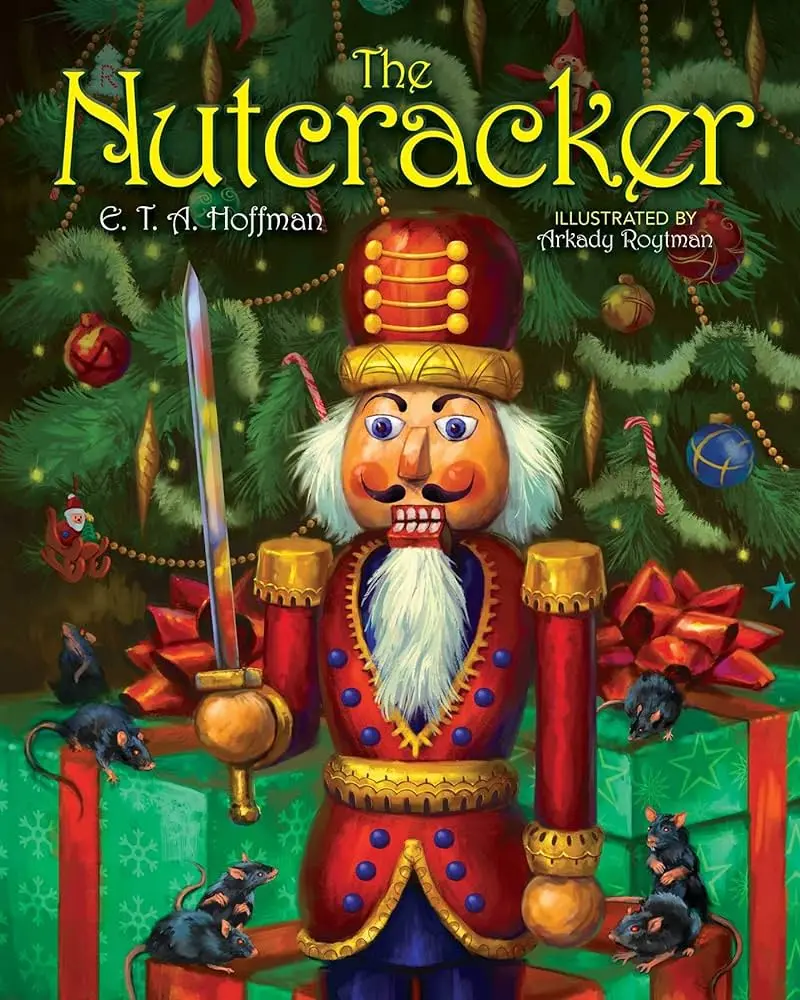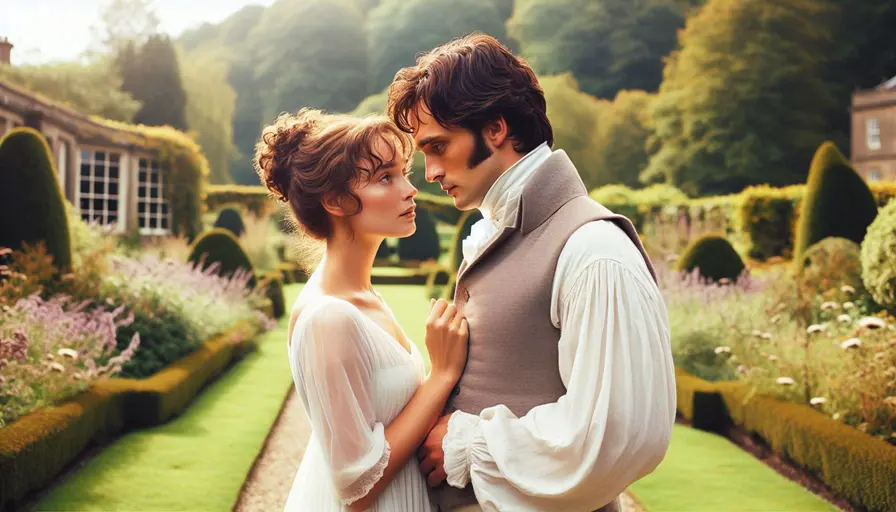An Detailed Look at Hoffmann’s ‘The Nutcracker and the Mouse King
The Nutcracker and the Mouse King by E.T.A. Hoffmann, the OG source of that sweet, sweet ballet everyone has heard of. First off, let’s address the giant nutcracker in the room: I had no idea the book was this bizarre. Like, seriously, I grew up with the ballet, thinking it was all sugarplum fairies and harmless holiday fun. You know, dancing snowflakes, Tchaikovsky’s enchanting music, a little girl named Clara (or Marie, but we’ll get to that mess later) twirling around in a pretty dress. Innocent stuff. So imagine my surprise when I cracked open Hoffmann’s book and got hit with a seven-headed Mouse King and some hardcore doll politics. It’s like finding out your sweet grandma used to be a punk rock legend.
The ballet? It’s the Disney-fied version of the story. Sure, there are battles, but they’re more like choreographed dance-offs. The Mouse King is just a guy in a rat suit who gets taken down with a dramatic flourish. The scariest part is maybe the Russian dance sequence if you’re not into acrobatics. But Hoffmann’s tale? It’s the stuff of nightmares. Dark, twisted, and with enough psychological complexity to keep Freud busy for years.
Let’s break it down. In Hoffmann’s version, we’ve got Marie, who’s not just some random girl with a nutcracker obsession. Oh no, she’s deeply involved in a fantastical and pretty messed-up world. Her godfather, Drosselmeier, isn’t just a creepy guy with a fondness for mechanical toys; he’s like a wizard crossed with a mad scientist. The guy brings a cursed nutcracker into Marie’s life, and suddenly she’s thrust into a battle for the ages.
Speaking of curses, let’s dive into that. Our wooden hero wasn’t always a nutcracker. No, he was a young man cursed by the Mouse Queen because her son, the Mouse King, got hurt. It’s a convoluted story involving a literal cracking of nuts (not as fun as it sounds) and a lot of family drama. Think Game of Thrones but with rodents and wooden dolls. Drosselmeier’s tale about the curse is like one of those fever dreams where nothing makes sense but somehow it all ties together in the end.
So here’s Marie, who, after the nutcracker valiantly battles the seven-headed Mouse King (seriously, Hoffmann, what were you smoking?), finds herself shrinking to nutcracker size and getting whisked away to a magical kingdom. And unlike the ballet, where everything is dreamy and beautiful, Hoffmann’s world is equal parts wonder and nightmare. It’s like Tim Burton decided to rewrite the ending.
Now, if you’re wondering why Hoffmann decided to throw so much weirdness into what could’ve been a simple holiday tale, join the club. The guy was all about dark romanticism and had a knack for blending the whimsical with the macabre. It’s no wonder the story has stuck around; it’s the kind of crazy that leaves an impression.
But back to the nutcracker. This wooden dude is more than just a pretty face with a cracking jaw. He’s a symbol of resilience and transformation. He starts as a cursed toy and ends up a prince. And not in the “happily ever after” way you’d expect. His journey is fraught with danger, self-discovery, and, of course, battles with a multi-headed mouse monster. It’s like Hoffmann decided to throw every fairy tale trope into a blender and hit ‘puree’.
And let’s talk about Marie for a second. In the ballet, she’s a passive character, mostly just watching the action unfold. But in Hoffmann’s tale, she’s brave, compassionate, and a bit of a badass. She saves the nutcracker, stands up to the Mouse King, and takes control of her destiny. It’s a refreshing change from the damsel-in-distress narrative, even if it does involve some truly bizarre plot twists.
Ok – time to address the Clara vs. Marie mess. If you’ve ever watched the ballet and thought, “Wait, isn’t her name Clara?” and then picked up Hoffmann’s book and thought, “Who the heck is Marie?”—welcome to the confusion club. So, in Hoffmann’s original story, our heroine is named Marie Stahlbaum. Simple enough, right? But then Alexandre Dumas (yes, the guy who wrote The Three Musketeers) got his hands on it and did his own version, renaming her to Clara. Because why not add a dash of confusion to the mix?
The ballet, which most people are familiar with, is based on Dumas’s adaptation. So, when you see the ballet, she’s Clara. When you read Hoffmann’s original, she’s Marie. It’s like that time I tried to keep track of all the different versions of Spider-Man (google Alternative versions of Spider-Man to see what I mean) . Honestly, they’re probably the same character in some multiverse, but for our sanity, let’s just roll with it.
One of my favorite moments in the book is when Marie’s family thinks she’s lost her mind after she starts babbling about the nutcracker’s adventures. It’s such a relatable moment. We’ve all been there, right? Trying to explain a dream or a weird thought and getting nothing but blank stares in return. Marie’s persistence and belief in the nutcracker’s world, despite everyone thinking she’s gone bonkers, is oddly inspiring. It’s like she’s the original champion of nerdy fandoms everywhere.
And can we talk about Drosselmeier for a minute? This guy is the true puppet master of the story. He’s always lurking in the background, pulling strings, and generally being mysterious. In the ballet, he’s just the eccentric godfather, but in the book, he’s got layers. He’s almost like a dark fairy godfather, guiding Marie but also testing her. He’s the kind of character that makes you question everything, like a less creepy Willy Wonka.
So, here I am, having my mind blown by the sheer weirdness of Hoffmann’s story. It’s dark, twisted, and nothing like the sugar-coated ballet we all know. It’s got depth, complexity, and enough oddities to keep you guessing. If you thought you knew The Nutcracker from the ballet, do yourself a favor and read Hoffmann’s original. Just be prepared for a bonkers journey through the dark and whimsical mind of a literary madman.
In the end, The Nutcracker and the Mouse King can show you just how sanitized adaptations can get. The ballet is all sweet dreams and lovely dances, but the book is where the real magic happens—dark, disturbing, and utterly captivating magic. It’s a reminder that fairy tales weren’t always meant to be bedtime stories. Sometimes, they’re the stuff of nightmares, and that’s what makes them unforgettable. So next time you’re watching the ballet, remember the madness behind the curtain, and maybe give Hoffmann’s tale a read. It’s a trip worth taking…..just maybe not right before bed.
Subscribe to our newsletter and get two free novels!



